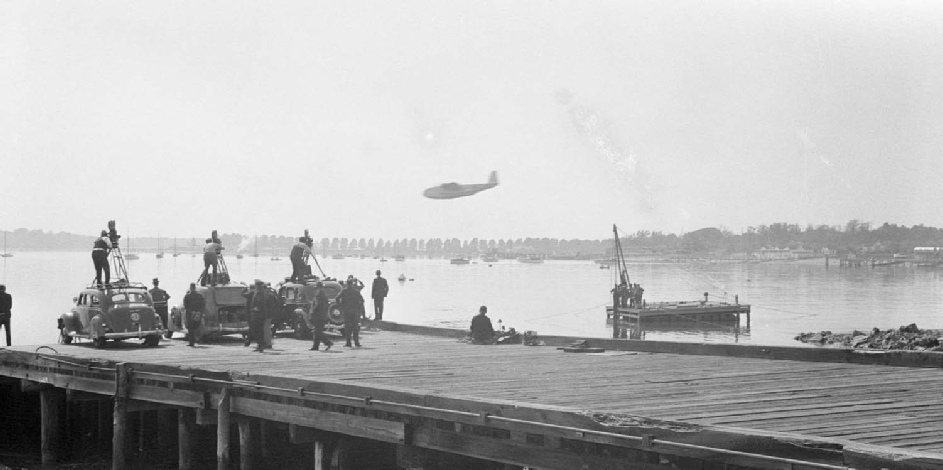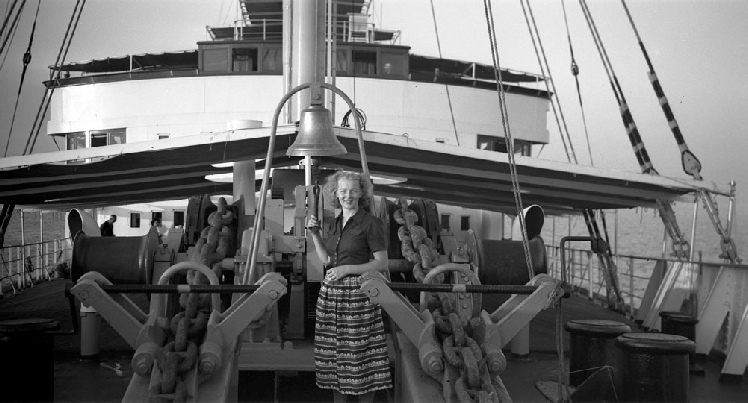
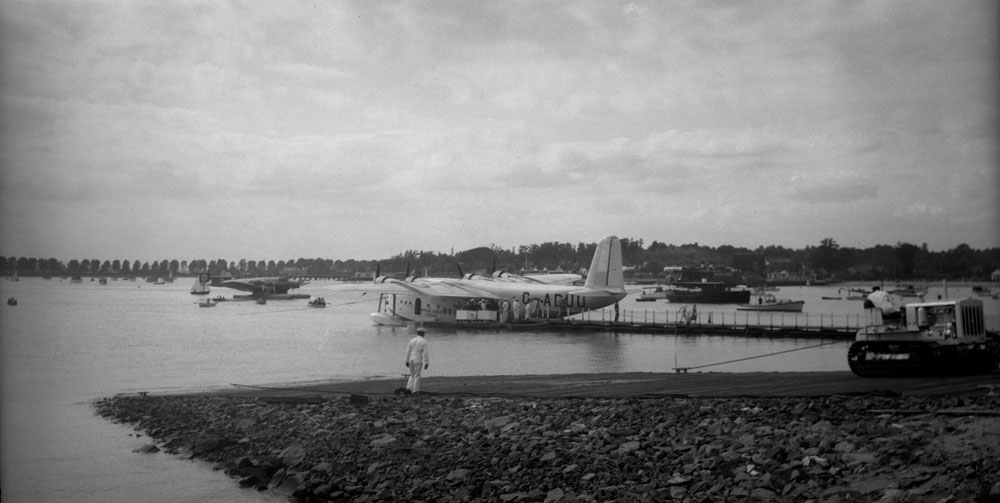
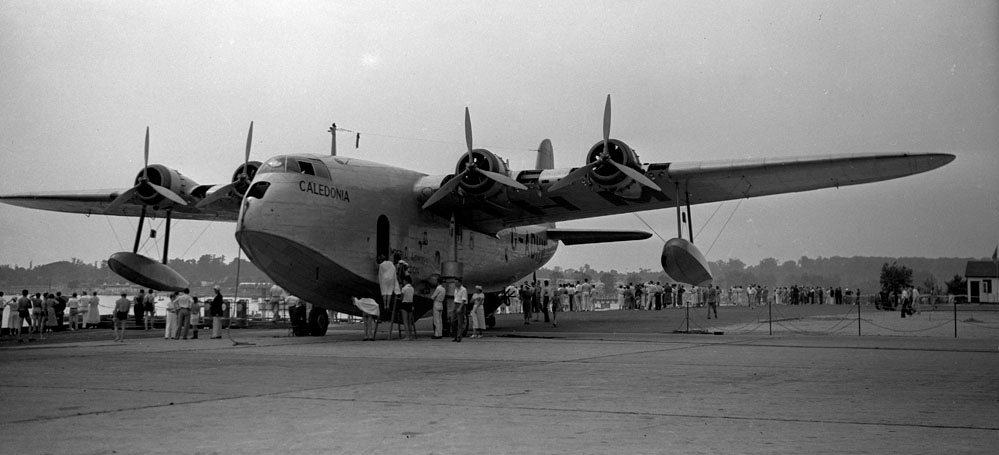
Various seaplanes were being used to start transatlantic travel during the late 1930’s. Port Washington seems to have been the “New York” destination for these flights.
The Short Brothers S-
The Caldonia appears to have been open to the public for inspection.
Check out the film crews. A transatlantic crossing of a flying boat was worthy of newsreels. Remember, this was pre-
This particular C-
Cavalier had left Port Washington on Long Island, New York, at 10:38 bound for Bermuda. At 12:23 p.m. the flying boat sent the message “Running into bad weather. May have to earth”, which referred to earthing the aerial; this was followed by another message at 12:27 Still in bad weather. Severe Static. Port Washington tried to call the Cavalier for the next 15 minutes but did not get a reply. At 12:57 Cavalier broadcast an S.O.S. message followed at 12:59 by “All engines failing through ice. Altitude 1,500 ft [457 m]. Forced landing in a few minutes”. Another message eight minutes later said she was still flying but on two engines; four minutes after that came a series of messages to say that she had come down in the sea. The last message, at 13:13, was the single word “Sinking”.
Of the 13 people aboard, 10 survived, 3 were lost.
The Short Brothers factory manufactures airplanes to this day in Belfast, Ireland.
The Germans
One of the really neat things about going through old photos is that you’re seeing life through the eyes of the camera on that date. No political-
The following pictures are from pre-
These German exercises were advertised as being preparation for transatlantic airmail. In fact, they were probably preparation for war.
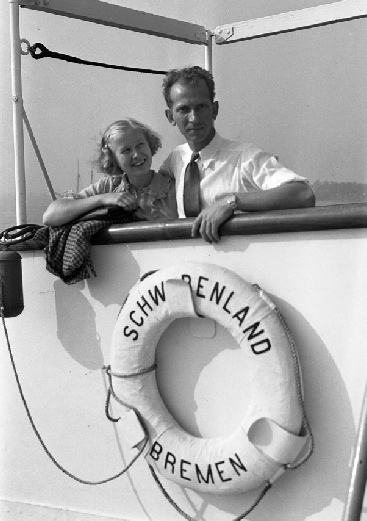
Elsie and Walter, left, and Aunt Margaret, above, ringing the bell aboard the Schwabenland.
Looks like the Germans were showing off their technology to the general public.
